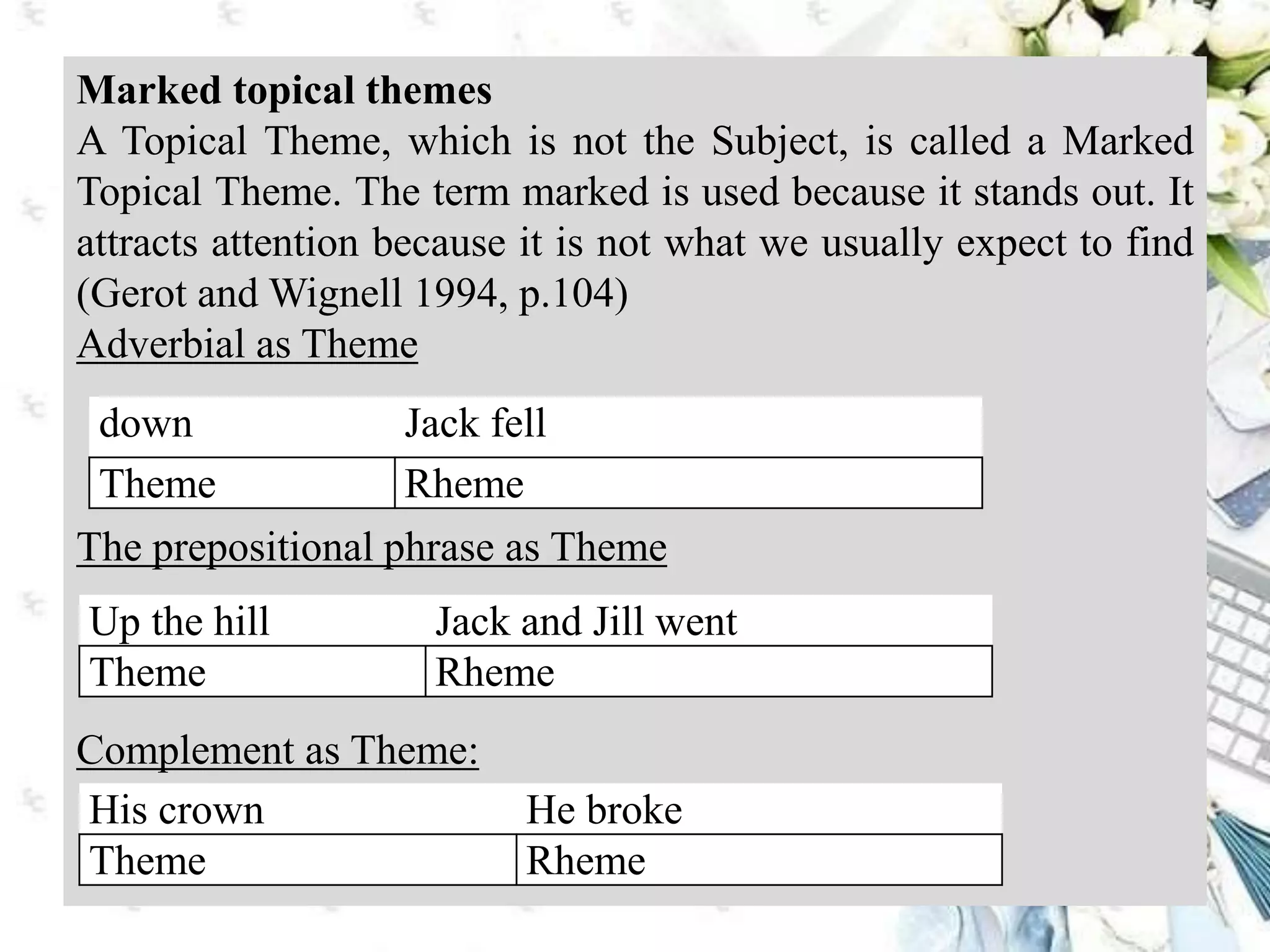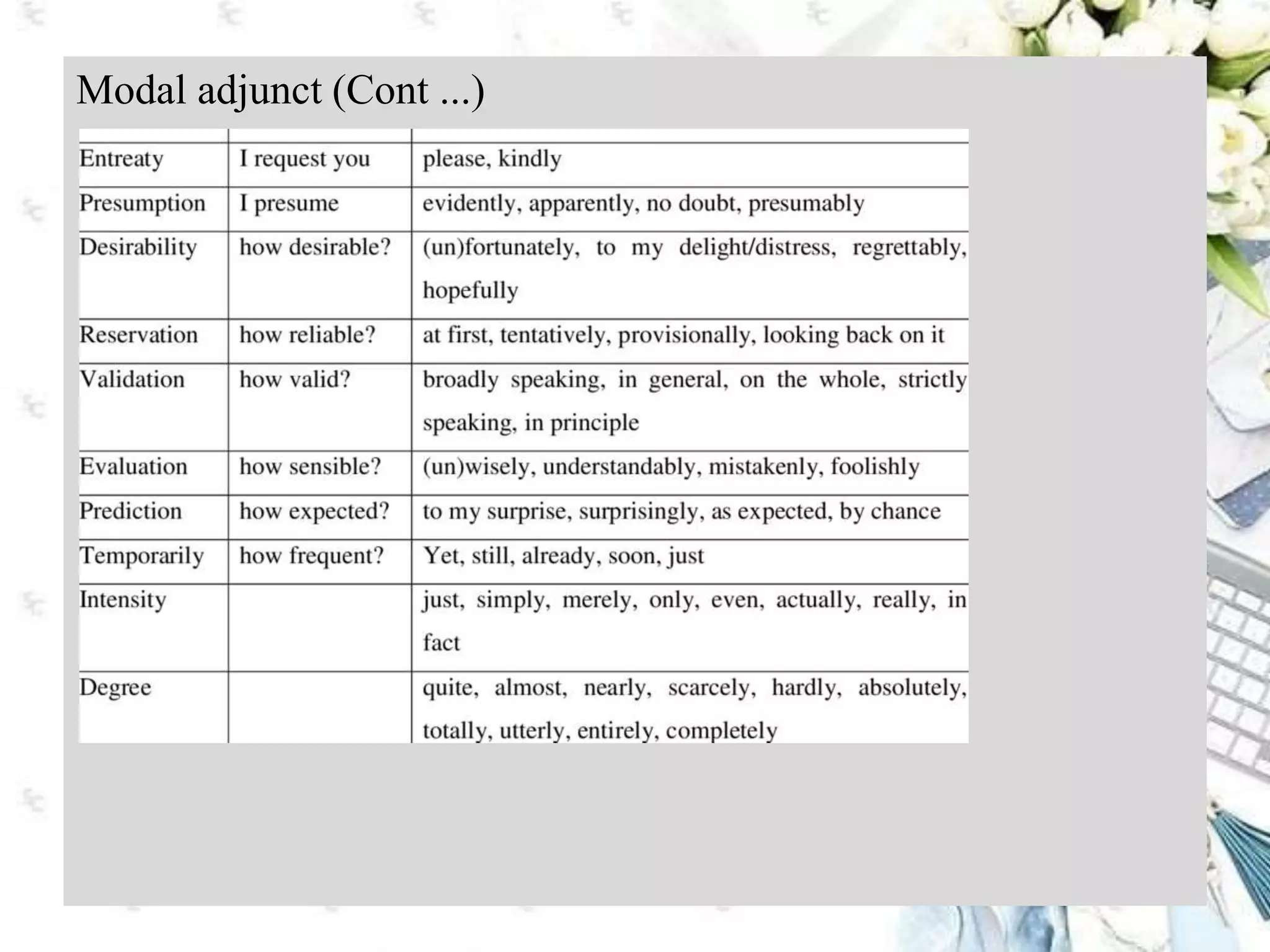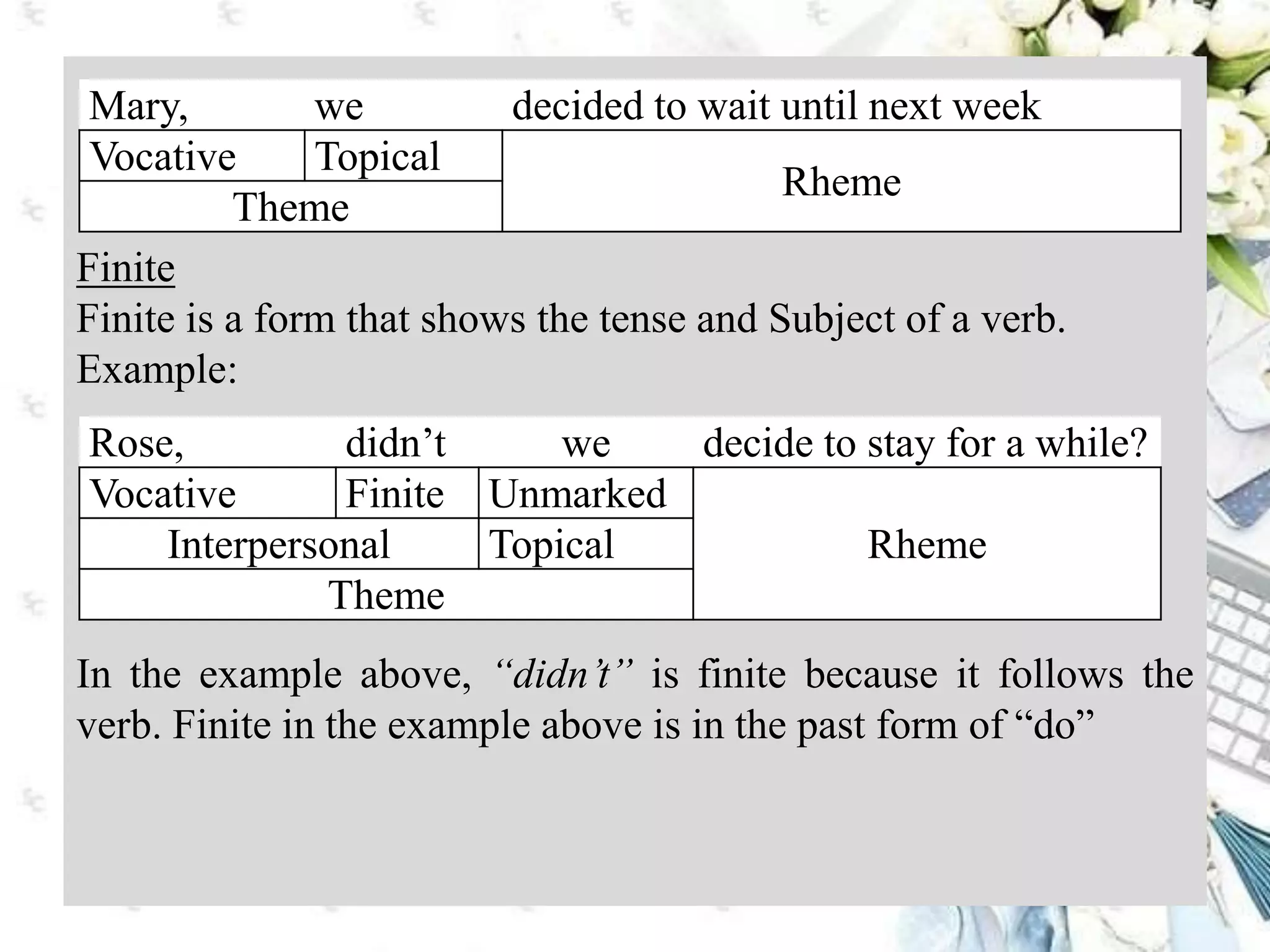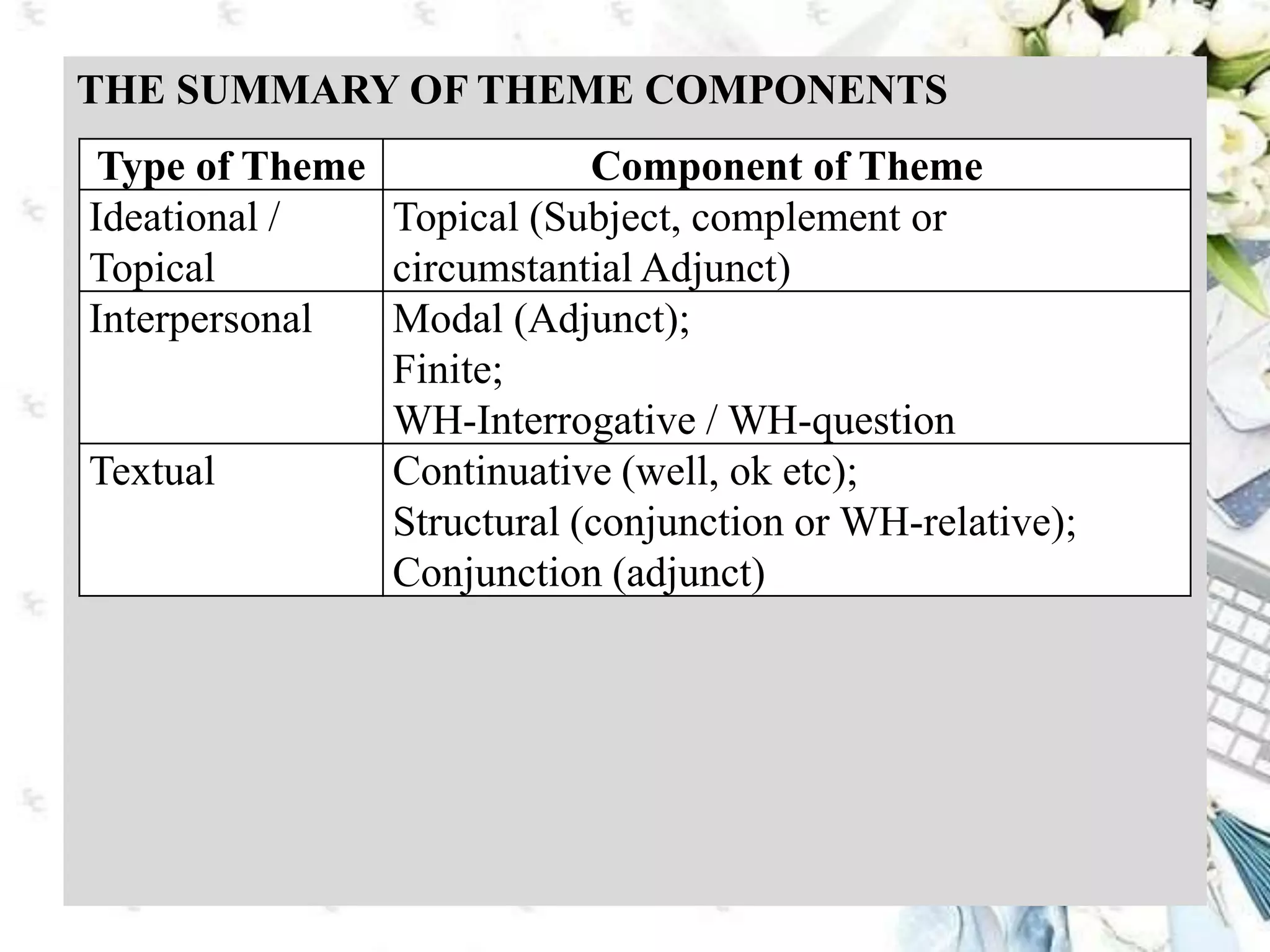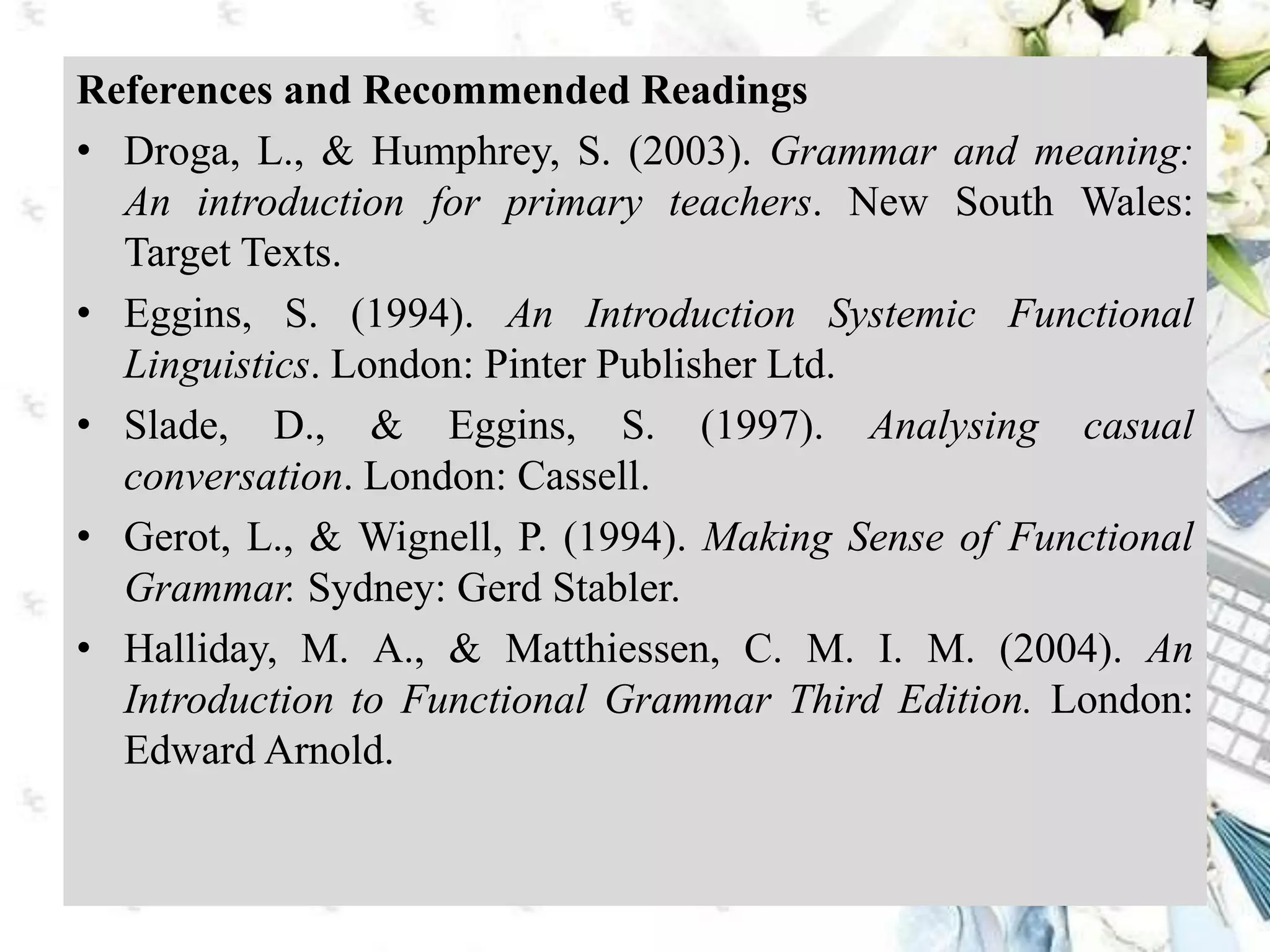This document discusses Systemic Functional Linguistics and the concepts of theme and rheme in clauses and texts. There are three main types of theme: ideational, which refers to the topic or subject; interpersonal, which includes elements like modals and vocatives; and textual, which relate the clause to the context. The theme serves as the point of departure for the message and clause, with the rheme providing new information. Various linguistic elements can serve as themes, including subjects, objects, adverbials, and conjunctions. The ordering of themes and rhemes helps to structure texts cohesively.






